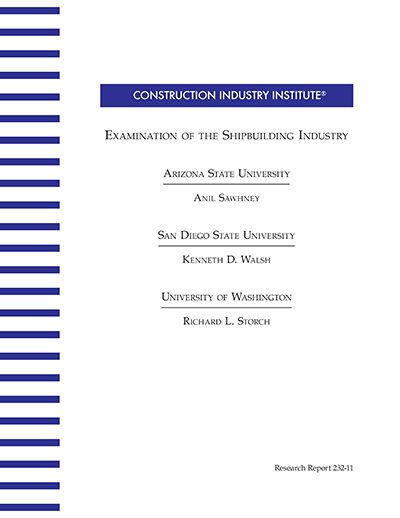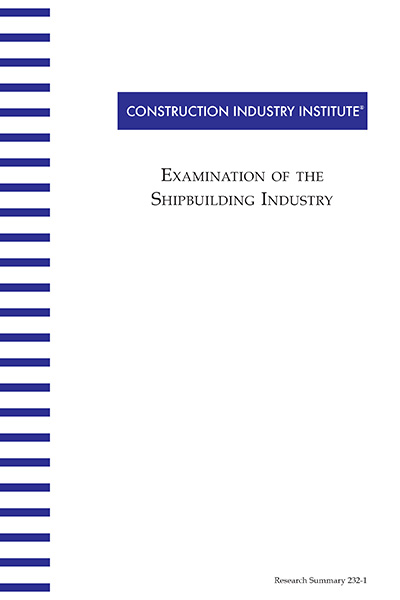
Examination of the Shipbuilding Industry
This report presents a summary of the research conducted by Research Team 232 directed toward understanding the design and production methods employed by Asian shipyards in the construction of commercial vessels. The objective was to determine what design and production methods are in use and to what extent these methods could be applied for the construction industry. This study was motivated by observations of high levels of modularization, 3D CADD, and supply chain integration in the highly publicized launch of the Queen Mary 2. As the work content for building ships is quite similar to that used in construction of fixed-position facilities on land, at least in terms of the skills, trades, and tools employed and the materials consumed, CII was interested to understand whether the perceptions of high-tech manufacturing and supply chain integration accompanying this launch were near reality.
The authors are indebted to the industry members of the research team. This project followed a somewhat different approach than a “traditional” CII project, in that it was intended primarily to consider this area, determine if in fact shipbuilding was ahead of construction, and if so to develop a recommended research program to adapt the practices to a construction setting. The total duration of the research effort was just over a year, and a smaller than typical team was convened in hopes of an agile response ensuing. The consequence was that the industry members of the team were required to dedicate significant time and energy to the process, for which the authors are most grateful.
The approach followed by the team was to first conduct descriptive research directed toward understanding the Asian shipbuilding sector. The Asian yards were the focus of the research because of early findings that this geographic setting has a dominant market share and more advanced production approaches than the European and North American yards. Using the results of this descriptive research, the team moved on to attempt to understand the potential applicability of the techniques employed in Asian shipyards, were they adapted to a construction setting. This was done via simulation and case study research.
The results of the study are summarized below:
- Asian shipyards are actually far more advanced than their European and North America counterparts.
- The Asian yards dominate the global shipbuilding market.
- Over the last 30 years, the Asian shipyards have moved from a stick-build approach to an integrated design/construct approach driven by interim products in an Interim Product Database (IPD).
- The IPD drives rapid design through intelligent reuse and facilitates safe and constructible designs.
- The net effect: Asian yards can deliver ships at about 20-30% the cost and schedule of US yard.


